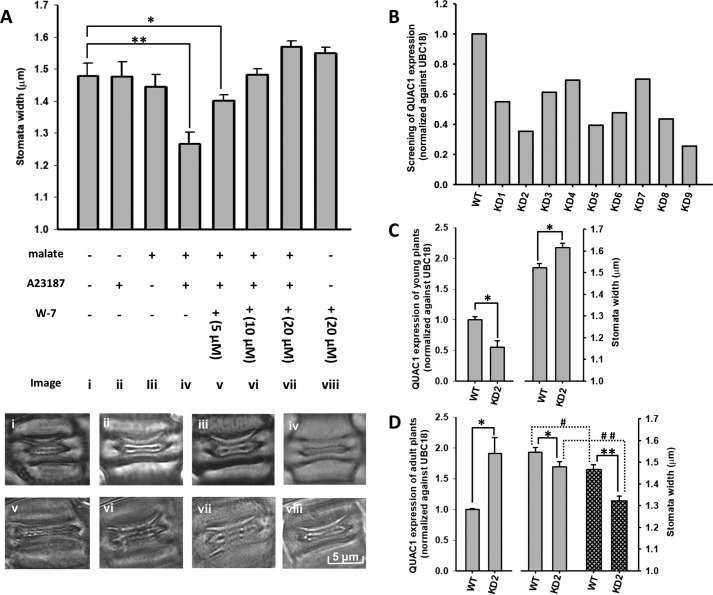Figure 3.
Effect of malate, a Ca2+ ionophore, and a CaM inhibitor on stomatal aperture in B. dystachyon WT and knockdown plants. Statistical symbols * and # indicate p ≤0.05, and ** and # # indicate p ≤0.01. A, plots of the averages from 100 stomata for each treatment are shown. Significance was determined by a lower-tailed Z test comparing each treatment against the opening control. Representative stomatal images for each treatment are labeled with a lowercase Roman numeral. B, PCR quantification of RNAi knockdown of QUAC1 in B. distachyon T0 generation plants. C, PCR quantification of QUAC1 expression and stomata width of the T1 generation KD2 seedlings (at 3–5 weeks). QUAC1 is significantly knocked down (shown by a one-sample t test, n = 3, with each KD2 paired to a unique WT, with each WT normalized to 1), which causes a small but significant increase in stomatal opening (by a two-sample t test, n = 100 stomata). D, PCR quantification of QUAC1 expression and stomata width of the T1 generation KD2 adult plants (at 8–10 weeks). QUAC1 has rebounded and been overly expressed (by a one-sample t test, n = 19, with WT normalized to 1). Stomata width of KD2 plants is significantly smaller both in the absence (empty pattern) and presence (cross-hatched lines) of malate and A23187 (by a two-sample t test, n = 100 stomata). All error bars represent standard error.

